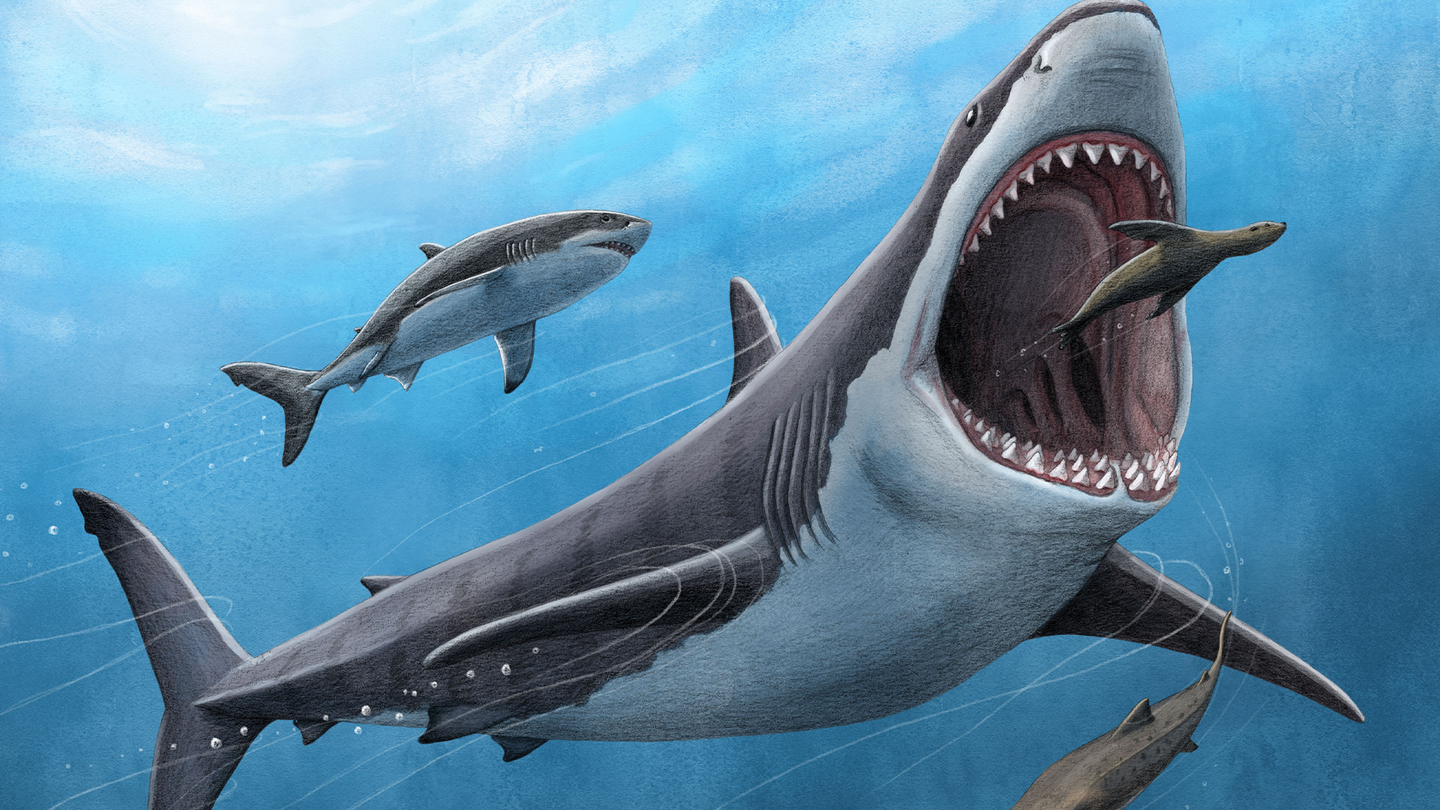
Most fish are cold-blooded, which means that they rely on the temperature outside of their body to regulate their internal temperatures However, some sharks are surprisingly warm-blooded, storing the heat that is generated by their muscles the way many mammals do. A study published June 26 in the journal Proceedings of the National Academy of Sciences finds that their evolutionary ancestors—the mighty megalodon—also share this endothermic nature. The amount of energy that the meg used to stay warm may have contributed to its extinction roughly 3.6 million years ago, and could help scientists study the impacts of future environmental changes.
[Related: 3D models show the megalodon was faster, fiercer than we ever thought.]
“Studying the driving factors behind the extinction of a highly successful predatory shark like megalodon can provide insight into the vulnerability of large marine predators in modern ocean ecosystems experiencing the effects of ongoing climate change,” co-author and UCLA biologist Robert Eagle said in a statement.
The megalodon stalked the world’s oceans from about 20 million years ago, and likely measured up to 50 feet in length. That’s roughly three times larger than the modern great white shark. The marine giants could have eaten a meal the size of an orca whale in about five bites, and boasted impressive chompers that could grow to the size of a human hand.
They also belonged to a group of sharks called mackerel sharks, which includes present day thresher sharks and the infamous great white. Mackerel sharks keep the temperature of all or parts of their bodies a bit warmer than the water surrounding them, unlike most fish that are cold-blooded and keep their bodies the same temperature as the water.
In the new study, a team analyzed the isotopes in the tooth enamel from fossilized megalodon teeth and concluded the ancient shark could maintain a body temperature that was roughly 13 degrees Fahrenheit warmer than the water it lived in. That temperature difference is large enough to categorize the megalodon as endothermic, or warm-blooded, according to the team.
They used a novel geochemical technique that uses a clumped isotope thermometry and phosphate oxygen isotope thermometry to test their “Megalodon Endothermy Hypothesis.”
“Studies using these methods have shown them to be particularly useful in inferring the thermo-physiologies of fossil vertebrates of ‘unknown’ metabolic origins by comparing their body temperature with that of co-occurring fossils of ‘known’ metabolisms,” co-author and William Patterson University geochemist Michael Griffiths said in a statement.
[Related: This whale fossil could reveal evidence of a 15-million-year-old megalodon attack.]
While the megalodon has a rich fossil record, its biology is less understood since no complete skeleton of the extinct beast is known in the fossil record. Using geochemistry techniques on the numerous teeth left behind can help paleontologists peer into the past.
A mineral called apatite is a primary component of teeth. It contains atoms of both carbon and oxygen that come in “light” or “heavy” forms known as isotopes. The amount of light or heavy isotopes that make up apatite as it forms can vary based on multiple environmental factors. The isotopes that make up fossil teeth can then reveal insights into where the animals lived, what it ate, and for marine vertebrates like the megalodon, some hints on the chemistry of the seawater that it lived in and its body temperature.

“You can think of the isotopes preserved in the minerals that make up teeth as a kind of thermometer, but one whose reading can be preserved for millions of years,” co-author and UCLA doctoral student Randy Flores said in a statement. “Because teeth form in the tissue of an animal when it’s alive, we can measure the isotopic composition of fossil teeth in order to estimate the temperature at which they formed and that tells us the approximate body temperature of the animal in life.”
The megalodon’s warmer body allowed it to move faster and not only tolerate colder water, but spread all over the world’ oceans. However, this evolutionary advantage may have contributed to its downfall. The megalodon lived during the Pliocene Epoch (5.33 million years to 2.58 million years ago), which was known for some massive environmental changes as the world cooled and sea levels changed.
Sustaining and maintaining an energy level that allowed for the megalodon’s higher body temperature would have required quite a bit of food. As the ecosystem changes, food may have become more scarce, especially when factoring in competition with newcomers in the marine environment–like our friend the great white.
The team hopes to apply a similar approach to studying other extinct species. “Having established endothermy in megalodon,” co-author and UCLA geologist Aradhna Tripati said in a statement, “the question arises of how frequently it is found in apex marine predators throughout geologic history.”
The post Megalodons were likely warm-blooded, despite being stone-cold killers appeared first on Popular Science.
Articles may contain affiliate links which enable us to share in the revenue of any purchases made.
from | Popular Science https://ift.tt/VAgGupN



0 Comments